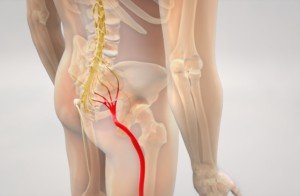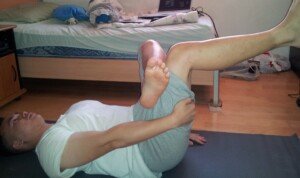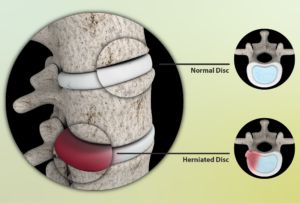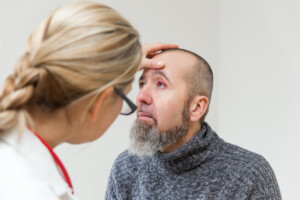Half of Mole Suddenly Falls Off, Bleeds

Has half or part of one of your moles suddenly fallen off and has bled?
Are you afraid this is melanoma?
“When half of a ‘mole’ suddenly falls off and bleeds, it usually is not a mole but a benign seborrheic keratosis that has caught on some undergarments,” says Dr. Janet Prystowsky, a board certified dermatologist in New York, NY, with 30+ years of experience.
A seborrheic keratosis is a skin barnacle and it is benign.
These skin growths typically begin appearing after age 40 and will NOT turn into melanoma.
However, keep in mind that these harmless barnacles may look very much like a mole — especially if it’s in a difficult-to-inspect location such as your butt or back, not enabling you to get a close view.

Seborrheic keratoses mixed with moles. Shutterstock/NICKY1841
They may even resemble melanoma and can suddenly change in their appearance.
For example, they may get noticeably lighter in a matter of only days.
This is harmless as long as what you see changing is only the seborrheic keratosis.
However, if you notice that a diagnosed seborrheic keratosis is changing in appearance or especially bleeding, have it checked by a dermatologist because, by sheer coincidence, it is possible for a melanoma to start up on the same skin surface area as this harmless barnacle.
Keep in mind that a seborrheic keratosis does NOT cause or trigger the melanoma that by chance just happened to arise within it.
The presence of these skin barnacles does not prevent melanoma from taking over the space.
Another situation that may appear as part or half of a mole tearing off and then some bleeding, is that of the common skin tag.
“Sometimes a benign skin tag will twist on its stalk and may completely or partially fall off,” says Dr. Prystowsky.
“However, if a true mole (nevus) begins bleeding (whether or not part of it falls off), it could represent a melanoma — a serious and potentially fatal type of skin cancer.
“Other forms of skin cancer, such as a pigmented basal cell carcinoma, may bleed and resemble the appearance of melanoma.
“A professional opinion from a dermatologist should be sought for any growth that starts bleeding, especially if you have no recollection of it being traumatized.”
Areas to Check for Moles
Moles can turn up anywhere where there is skin.
When conducting self-exams of your skin, be sure to check the following areas: behind your ears, the earlobes, inside your ears, the eyelids, the lips, your belly button, between your fingers and toes, and the soles of your feet.
The skin of the genital area should also be checked.

In combination with her focus on early skin cancer detection and removal, Dr. Prystowsky provides a wide range of revitalizing and rejuvenating treatments.
 Lorra Garrick has been covering medical, fitness and cybersecurity topics for many years, having written thousands of articles for print magazines and websites, including as a ghostwriter. She is also a former ACE certified personal trainer.
Lorra Garrick has been covering medical, fitness and cybersecurity topics for many years, having written thousands of articles for print magazines and websites, including as a ghostwriter. She is also a former ACE certified personal trainer.
Top image credit: Shutterstock/IanRedding
Muscle Twitching vs. Spasms: the Difference?

A neurologist explains the difference between twitching muscles and a spasm.
These two terms are often used interchangeably among laypeople either posting their concerns in forums, or journalists who indiscriminately toss around these two terms.
To get the distinction between muscle twitching and a spasm (of skeletal muscle), I asked Bonnie Gerecke, MD, director of the Neurology Center at Mercy in Baltimore.
“Muscle twitching refers to a small muscle contraction in the body,” says Dr. Gerecke.
“This usually entails twitching of some muscle fibers of a muscle and not necessarily the entire large muscle itself.” The entire large muscle itself is called the belly.
An example of a twitching muscle is that which commonly occurs in the eyelid. Another common area is the hamstring group.
You’ll feel the fluttering or “creepy crawlie” under the skin in a very localized spot.
If the twitch occurs in a very small muscle, such as the eyelid or pinky toe, you’ll see the jerking or jumping of the involved muscle fibers.
But that’s because the affected fibers are part of such a tiny muscle to begin with.
“Muscle spasm refers to a spontaneous abnormal contraction of a whole muscle,” continues Dr. Gerecke.
An example is when a leg jerks as you’re falling asleep (myoclonus). This is a perfectly normal phenomenon.
“A twitch is a brief phenomenon that affects a small portion of a muscle, whereas a spasm may be more prolonged and affects a large muscle group.
“A twitch does not tend to be painful, but a spasm can be quite painful.”
Myoclonus is painless, but the other kind of spasm that Dr. Gerecke refers to is, indeed, intensely painful.
For instance, you’re just awakening from a night’s sleep and without really thinking, you stretch your body, straightening and tensing up your legs — when suddenly, your calf muscle goes into a spasm.
The pain is agonizing. To relax the muscle, bend the foot upward. Massage will also help.
You may also notice sudden pain in your neck and jaw area upon doing a big yawn.
The involved muscles are going into a spasm, and it hurts quite a bit, but subsides very soon.
Even smaller muscles can go into a benign spasm, such as those in your big toe. It hurts, but quickly subsides.
Non-skeletal muscle can also spasm, such as the uterus (menstrual cramps) and the esophagus (which can make someone think they’re having a heart attack).
You now know the difference between a muscle twitch and a spasm.

Dr. Gerecke has a special interest in ALS, myasthenia gravis, myopathy/muscular dystrophy, peripheral neuropathy and radiculopathy. She is board certified in general neurology and neuromuscular medicine.
 Lorra Garrick has been covering medical, fitness and cybersecurity topics for many years, having written thousands of articles for print magazines and websites, including as a ghostwriter. She’s also a former ACE-certified personal trainer.
Lorra Garrick has been covering medical, fitness and cybersecurity topics for many years, having written thousands of articles for print magazines and websites, including as a ghostwriter. She’s also a former ACE-certified personal trainer.
.
Top image: Shutterstock/Joyseulay
Is Tongue Twitching Normal if You Stick It Out to Inspect?

A neurologist explains if it’s normal for a tongue to twitch when you hold it out to examine it due to bulbar ALS fear.
People with a fear of bulbar onset ALS will stick their tongue out and hold it in one spot to see if it twitches.
It’s difficult to hold the tongue perfectly still, so invariably, it moves, and you may incorrectly interpret these movements as fasciculations with a pathological cause.
“It is not necessarily pathological for one to experience twitching in the tongue when protruding it,” says Bonnie Gerecke, MD, director of the Neurology Center at Mercy in Baltimore.
“Twitching can be due to a variety of conditions such as anxiety, hyperthyroidism, hypoglycemia (low blood sugar) and even in normal individuals,” explains Dr. Gerecke.
“Fasciculations, which are different than just twitching of the tongue, is often more pathological, but is rare and is often not seen in isolation in patients with ALS.
“That is to say that if there are fasciculations in the tongue of a patient with ALS, he or she also will likely have dysarthria (slurred speech) and perhaps trouble chewing or swallowing.”
Stop sticking out your tongue to inspect it for twitching.
Give this a rest. Enjoy your food and talking. If there’s difficulty swallowing, chewing or speaking as a result of bulbar ALS, even early ALS, you will know this without having to consciously try to detect it.
Think about that for a moment: Difficulty swallowing, chewing or speaking without slurring are symptoms that are impossible to miss!
You do not need to constantly be inspecting your tongue, subjecting this muscle to the tiring act of holding one position.
For additional reassurance, ask all of your friends to stick out their tongue and try to hold it still without it “twitching.”

Freepik.com/asierromero
If you’re reluctant to make this request of adults, ask children; disguise the request as a game.
Have a stopwatch and ask the child to see if they could stick out their tongue and hold it there for 20 seconds without it moving.
You will see the same “twitching” in this experiment as you do with your own tongue.

Dr. Gerecke has a special interest in ALS, myasthenia gravis, myopathy/muscular dystrophy, peripheral neuropathy and radiculopathy. She is board certified in general neurology and neuromuscular medicine.
 Lorra Garrick has been covering medical, fitness and cybersecurity topics for many years, having written thousands of articles for print magazines and websites, including as a ghostwriter. She’s also a former ACE-certified personal trainer.
Lorra Garrick has been covering medical, fitness and cybersecurity topics for many years, having written thousands of articles for print magazines and websites, including as a ghostwriter. She’s also a former ACE-certified personal trainer.
.
Top image: Shutterstock/ShotPrime Studio
Epidural Injection for Sciatica Injected Outside the Disc?
Wondering how effective an epidural injection for sciatica would be if the injection were NOT administered directly into the problematic disc?
Well, this is a fair question for the layperson with sciatica, but the answer is very interesting:
“Epidural injections are not injected into the disc — they are injected into the epidural space,” says Dr. Michael Perry, MD, member of the North American Spine Society and American College of Sports Medicine.
“The purpose of an epidural injection is typically to diminish inflammation around the nerve root that can cause inflammation to recede,” he says.
“Patients who have sciatica can have inflammation of the nerve. The best route for treatment is through the use of a steroid.
“The steroid can be injected to the inflamed area and this can diminish the inflammation and therefore the pain the patient is experiencing. Steroids are not injected in the disc as a form of treatment.”
What Exactly Is Sciatica?
Sciatica is the name for an irritation to the sciatic nerve — an irritation that can have more than one cause.

Shutterstock/Nathan Devery
It results in symptoms of pain, tingling, numbness and/or weakness to the areas that the large sciatic nerve innervates.
These regions of symptoms extend from the buttocks to the foot.
A classic sign of sciatica is that it affects only one side of the body, and the pain can be sudden and “shoot” down the leg.
The sciatic nerve, as mentioned, is irritated — it is compressed, the so-called pinched nerve.
Conservative treatments, in addition to the epidural injection, usually are all that the patient needs to resolve the problem. Surgery is rarely indicated.
Epidural injections are also called steroid injections, but the “steroid” is actually a corticosteroid drug, NOT the type of steroid that bodybuilders and other athletes take.
The objective is to suppress the inflammation that surrounds the irritated root of the sciatic nerve. These injections last about three months.
An irritated disc root doesn’t always involve the sciatic nerve.
The point of compression can be a little above or below. Epidural injections are frequently used for these cases as well.
 Dr. Perry is chief medical director and co-founder of USA Spine Care & Orthopedics, and is frequently sought out for his minimally invasive spine surgery expertise.
Dr. Perry is chief medical director and co-founder of USA Spine Care & Orthopedics, and is frequently sought out for his minimally invasive spine surgery expertise.
 Lorra Garrick has been covering medical, fitness and cybersecurity topics for many years, having written thousands of articles for print magazines and websites, including as a ghostwriter. She’s also a former ACE-certified personal trainer.
Lorra Garrick has been covering medical, fitness and cybersecurity topics for many years, having written thousands of articles for print magazines and websites, including as a ghostwriter. She’s also a former ACE-certified personal trainer.
.
Top image: Freepik.com pressfoto
Chiropractic Treatment, Spinal Cord Injury in Sciatica Patient
What’s the truth about whether chiropractic manipulation might cause spinal cord injury in a patient with sciatica?
Many people who suffer the pain of a disc herniation or sciatica have considered getting chiropractic treatment, but might fear that the hands-on treatment could harm their spinal cord or column.
Though sciatica can be caused by a herniated (bulging) disc, not all cases of bulging discs affect the sciatic nerve.
But the pain in the back, butt and/or leg feels the same.
Tingling and numbness may also be present.
Chiropractic Treatment of Sciatica
Can injury to the spinal cord result via the manipulation by a chiropractic physician?
“It is possible, but not a common occurrence,” says Dr. Michael Perry, MD, member of the North American Spine Society and American College of Sports Medicine.
He adds, “If the patient does have a herniated disc, chiropractors typically take X-rays and MRI scans prior to manipulations to ensure there are no problems occurring on the spine that would be a contraindication for manipulation.”
Chiropractors are trained at interpreting X-rays and MRI scans.
With that said, you should not arrange to have chiropractic treatment for your sciatica if the treating physician has not reviewed images of your condition.
There should be a discussion of the images before any manipulation begins.
Other Treatments for Sciatica
In addition to chiropractic treatment, there are other options for sciatica.
If it has been determined that the irritation is being caused by a tight piriformis muscle imposing upon the sciatic nerve, stretching exercises will be prescribed.
The patient may also opt to take the medications mentioned below.
If it’s nerve root compression, medications are one line of therapy. These include anti-inflammatories, muscle relaxants and tricyclic antidepressants.
Physical therapy is another conservative treatment, as are steroid injections (which last about three months).
Sciatica Stretches for the Piriformis Muscle

Freepik.com/yanalya

Kpa1563, CreativeCommons
 Dr. Perry is chief medical director and co-founder of USA Spine Care & Orthopedics, and is frequently sought out for his minimally invasive spine surgery expertise.
Dr. Perry is chief medical director and co-founder of USA Spine Care & Orthopedics, and is frequently sought out for his minimally invasive spine surgery expertise.
 Lorra Garrick has been covering medical, fitness and cybersecurity topics for many years, having written thousands of articles for print magazines and websites, including as a ghostwriter. She’s also a former ACE-certified personal trainer.
Lorra Garrick has been covering medical, fitness and cybersecurity topics for many years, having written thousands of articles for print magazines and websites, including as a ghostwriter. She’s also a former ACE-certified personal trainer.
.
Top image: Shutterstock/aijiro
Can a Walker Reduce Inflammation from Sciatica?

If you have inflammation that impairs walking, you might be wondering if using a walker can reduce the so-called inflammatory chemical mediators, such as those present with a herniated disc or sciatica.
The Effect of Using a Walker on Sciatica
“A walker is not prescribed to diminish inflammation,” says Dr. Michael Perry, MD, member of the North American Spine Society and American College of Sports Medicine.
He continues, “Walkers are used for patients who need assistance with walking to provide stability and prevent further injury from falling.
“A walker can help alleviate pressure on the spine and help diminish pain; however, other than short term relief, they are not prescribed to assist with inflammation.”
So if you have low back pain from spinal stenosis — which is completely different from sciatica — a walker will help relieve pain by subtracting pressure off your low back.
It’s not a treatment; it’s only a pain reliever by altering the mechanics of your walking.
Using a walker significantly alters body mechanics by shifting weight distribution and changing gait patterns.
For spinal stenosis and other conditions, it provides external support, allowing users to offload weight from the lower limbs, which reduces stress on hips, knees and ankles.
Walkers promote a wider base of support, improving balance and stability but may encourage a forward-leaning posture if not properly adjusted.
This can lead to changes in spinal alignment and reduced natural arm swing.
Additionally, users often rely more on their upper body muscles, particularly the shoulders and arms, which can cause fatigue or strain over time.
Sciatica
But if you’ve been diagnosed with sciatica, you have an entirely different situation on your hands.
You will want to engage in physical therapy and stretching exercises.
These treatment modalities are very effective at resolving sciatica pain in many people by reducing nerve compression, improving flexibility and strengthening the supporting muscles.
These treatments help correct posture, enhance spinal alignment and promote mobility.
But a walker will do zilch for the inflammatory process of sciatic nerve compression and certainly won’t help improve posture.
Dr. Perry continues, “Inflammatory chemical mediators occur when an area of the body is injured and cells release mediations which can cause inflammation to other injured areas of the body.
“Any movement or irritation of an area can increase an inflammatory mediator.”
Though it may initially sound intuitive and reasonable to just grab the walker whenever your sciatica pain acts up, this is NOT something you’ll want to do.
Your doctor will recommend treatment options that will exclude the use of a walker, and include the use of medications such as anti-inflammatories and muscle relaxants, along with possibly epidural steroid injections to reduce the inflammation.
 Dr. Perry is chief medical director and co-founder of USA Spine Care & Orthopedics, and is frequently sought out for his minimally invasive spine surgery expertise.
Dr. Perry is chief medical director and co-founder of USA Spine Care & Orthopedics, and is frequently sought out for his minimally invasive spine surgery expertise.
 Lorra Garrick has been covering medical, fitness and cybersecurity topics for many years, having written thousands of articles for print magazines and websites, including as a ghostwriter. She’s also a former ACE-certified personal trainer.
Lorra Garrick has been covering medical, fitness and cybersecurity topics for many years, having written thousands of articles for print magazines and websites, including as a ghostwriter. She’s also a former ACE-certified personal trainer.
Can Excessive Bed Rest from a Herniated Disc Cause a DVT ?

You’d better avoid a lot of bed rest, no matter how painful your herniated disc, if you want to avoid a DVT (deep vein thrombosis).
“Yes, bed rest is never indicated for people with back problems,” says Dr. Michael Perry, MD, member of the North American Spine Society and American College of Sports Medicine.
“Studies have shown bed rest for neck or back problems to be detrimental for the patient.
“Being inactive can cause serious issues to form such as blood clots. If DVT develops, it can cause a pulmonary embolism, which is extremely dangerous.”
Lying around all day in the name of pain stemming from a herniated disc is the last thing you want to do.
Pain doesn’t always mean you should take to lying around or trying to sleep it off.
It’s one thing to sleep off pain from a temporary problem, such as feminine monthly discomfort or a headache.
But a herniated disc isn’t going anywhere too soon.
You need to learn how to live with it should you opt for conservative management.

Source: myupchar. com
This means avoiding excessive bed rest or lounging around. Physical therapy is a highly recommended mode of conservative treatment.
But even if it fails, and even if you’ve decided to pursue surgery, you absolutely should not get in the habit of taking to bed rest, as this can become excessive—a major risk factor for DVT.
Part of the DVT could break off and travel to the lungs where it becomes a pulmonary embolism. The time lapse for this process is immediate.
A pulmonary embolism can take only moments to kill the patient.
Warning signs of a major pulmonary embolism can come on quite suddenly, and the patient could be dead before the paramedics arrive.
A herniated disc, no matter how painful, combined with excessive bed rest, never mix well.
 Dr. Perry is chief medical director and co-founder of USA Spine Care & Orthopedics, and is frequently sought out for his minimally invasive spine surgery expertise.
Dr. Perry is chief medical director and co-founder of USA Spine Care & Orthopedics, and is frequently sought out for his minimally invasive spine surgery expertise.
 Lorra Garrick has been covering medical, fitness and cybersecurity topics for many years, having written thousands of articles for print magazines and websites, including as a ghostwriter. She’s also a former ACE-certified personal trainer.
Lorra Garrick has been covering medical, fitness and cybersecurity topics for many years, having written thousands of articles for print magazines and websites, including as a ghostwriter. She’s also a former ACE-certified personal trainer.
.
Top image: ©Lorra Garrick
Purple Pimple Draws Blood when Popped: Melanoma?
Yes, what appears to be a purple pimple that bleeds just might be melanoma…
The term “pimple” is often used loosely, describing quite an array of bumps or tiny lesions on the skin.
So what may appear to be the type of pimple that many teenagers get may actually be something entirely different.
“Most common cause of a blood filled pimple is an angioma — a type of growth that’s genetic and filled with blood,” says Gary Goldenberg, MD, of Goldenberg Dermatology, and assistant professor of dermatology and pathology at Mount Sinai School of Medicine.
“These are more common as we age.” Angiomas do not really look like pimples, but they can bleed if irritated.

Angiomas. Shutterstock/Ocskay Bence
They are a striking reddish magenta color rather than purple. When viewing these, make sure the light is sufficient so that they don’t seem purple.
Don’t let the name angioma scare you. Not all “oma” suffixes refer to cancer. “Oma” means mass or collection.
So in the case of an angioma, it’s a mass or collection of vascularity (angio refers to blood vessels).
An angioma is sometimes called a hemangioma. The “hem” refers to blood: blood vessel mass.
“A cyst can also look bloody when popped of traumatized,” says Dr. Goldenberg.
What about melanoma?
“Skin cancers, such as basal cell carcinoma, squamous cell carcinoma or melanoma, can also present this way,” says Dr. Goldenberg, referring to what seems to be a purple pimple that’s drawing blood. “Most importantly, see your dermatologist and get checked!”

Nodular melanoma; looks like a pimple.

Dr. Goldenberg of Goldenberg Dermatology provides comprehensive care in medical and cosmetic dermatology, including melanoma and other skin cancer, moles, psoriasis, eczema and acne. He is the medical director of the Dermatology Faculty Practice, NY.
 Lorra Garrick has been covering medical, fitness and cybersecurity topics for many years, having written thousands of articles for print magazines and websites, including as a ghostwriter. She’s also a former ACE-certified personal trainer.
Lorra Garrick has been covering medical, fitness and cybersecurity topics for many years, having written thousands of articles for print magazines and websites, including as a ghostwriter. She’s also a former ACE-certified personal trainer.
.
Top image: Shutterstock/antoniodiaz
Itchy Red Bumps on Palm: Causes Other than Insects?

There are several possible causes of red itchy bumps on your palm, and one of these causes is especially serious, says Gary Goldenberg, MD, a dermatologist.
He runs Goldenberg Dermatology, and is assistant professor of dermatology and pathology at Mount Sinai School of Medicine.
“Most commonly, especially in adults, this is a manifestation of hand dermatitis, a type of eczema,” says Dr. Goldenberg.
“Allergic contact dermatitis may cause this alone or in combination with eczema.
“Psoriasis can also cause itchy bumps on the hands. Fungal infection of the hands usually presents with scaly patches, but can cause bumps as well. Syphilis can also look like this.”
Syphilis is the serious disorder here. And why is this sexually transmitted disease so serious?
The first symptom is a painless sore usually on the genitals or in the mouth.
The sore will go away but this does not mean you’re out of the woods.
Though the disease can be often cured with just one penicillin injection, it can also kill if left untreated.
After the initial sore heals, a rash may develop and cover the entire body, including the palms. It may not itch, but it also may.
There can be other symptoms too such as hair loss, sore throat and wart-like sores in the mouth.
In people who never get treated for syphilis, about 15 to 30 percent develop the “tertiary” form of the disease.
At this point the infection can damage the brain, eyes, nerves, blood vessels, liver and bones.
These complications may start up many years after the original and untreated infection.
Solutions for Itchy Red Bumps on the Palm
“Treatments vary between steroid creams for psoriasis, eczema or allergic contact dermatitis.
“A blood test is usually needed to diagnose syphilis, and antibiotics are needed for treatment.”
And remember, the fact that a course of antibiotics can resolve syphilis does not mean that this sexually transmitted disease is nothing to worry about.

Dr. Goldenberg of Goldenberg Dermatology provides comprehensive care in medical and cosmetic dermatology, including melanoma and other skin cancer, moles, psoriasis, eczema and acne. He is the medical director of the Dermatology Faculty Practice, NY.
 Lorra Garrick has been covering medical, fitness and cybersecurity topics for many years, having written thousands of articles for print magazines and websites, including as a ghostwriter. She’s also a former ACE-certified personal trainer.
Lorra Garrick has been covering medical, fitness and cybersecurity topics for many years, having written thousands of articles for print magazines and websites, including as a ghostwriter. She’s also a former ACE-certified personal trainer.
.
Top image: Shutterstock/WSW1985
Skin Around Eyes Is Suddenly Itchy, Dry and Flaky?
The skin around your eyes has suddenly become dry and flaky, and itches. What might this be?
Dry, flaky and itching eyes not only feel bad, but they don’t look too good, either.
Has this happened to you lately?
“This is likely allergic contact dermatitis,” says Gary Goldenberg, MD, of Goldenberg Dermatology, and assistant professor of dermatology and pathology at Mount Sinai School of Medicine.
“This condition is more common in women than men around the eyes, continues Dr. Goldenberg.
“The most common causes are nail polish, cosmetic products, hair care products and gold jewelry.
“This condition is likely to come and go unless you find out what’s causing the problem and eliminate its contact with the skin.”
Sources of Contact Dermatitis
The skin around the eyes is particularly sensitive and not immune to reactions from allergic substances.
Allergic reactions in this area can manifest as dryness, itchiness, and flaking, but may also include redness, bumps, and blisters.
Such symptoms can occur if allergens come into contact with the delicate skin around your eyes.
A common way allergens can transfer to this sensitive area is through direct contact with contaminated hands.
For instance, if you apply antibiotic creams or other topical medications and do not wash your hands thoroughly afterward, residues of these substances can linger on your fingertips.
When you then touch your face or rest your cheek in your palm, these allergens are transferred to the skin around your eyes, potentially triggering an allergic reaction.
Similarly, substances like sawdust, which is known to cause contact dermatitis, can also be a culprit if you are exposed to it regularly.
Other potential irritants include various chemicals such as solvents, insect repellents, rubbing alcohol, bleach, and detergents.
Even perfumes and the rubber used in goggles can contribute to contact dermatitis around the eyes.
To prevent these issues, it’s important to practice good hygiene, such as washing your hands after applying topical products and avoiding direct contact with known allergens.
If symptoms persist, consulting a healthcare professional can help identify the specific allergen and provide appropriate treatment or preventive measures.
Solutions
Gloves act as a barrier, preventing direct contact with harmful substances like solvents, detergents and other chemicals that can cause dermatitis or other skin issues.
Using gloves can also help prevent the transfer of these chemicals to your face, particularly if you inadvertently touch your eyes or other sensitive areas.
Dr. Goldenberg explains, “Treatment involves moisturizers, such as aquaphor, topical steroid cream and non-steroidal creams, like elidel and protopic. Most importantly see your dermatologist, find out the cause and avoid it.”

Dr. Goldenberg of Goldenberg Dermatology provides comprehensive care in medical and cosmetic dermatology, including melanoma and other skin cancer, moles, psoriasis, eczema and acne. He is the medical director of the Dermatology Faculty Practice, NY.
 Lorra Garrick has been covering medical, fitness and cybersecurity topics for many years, having written thousands of articles for print magazines and websites, including as a ghostwriter. She’s also a former ACE-certified personal trainer.
Lorra Garrick has been covering medical, fitness and cybersecurity topics for many years, having written thousands of articles for print magazines and websites, including as a ghostwriter. She’s also a former ACE-certified personal trainer.
.




















































